Wild Cinnamon Tree
Scientific Name: Canella winterana
POWO Status: Shrub or Tree
IUCN Red List threat level: Least Concern
Location:

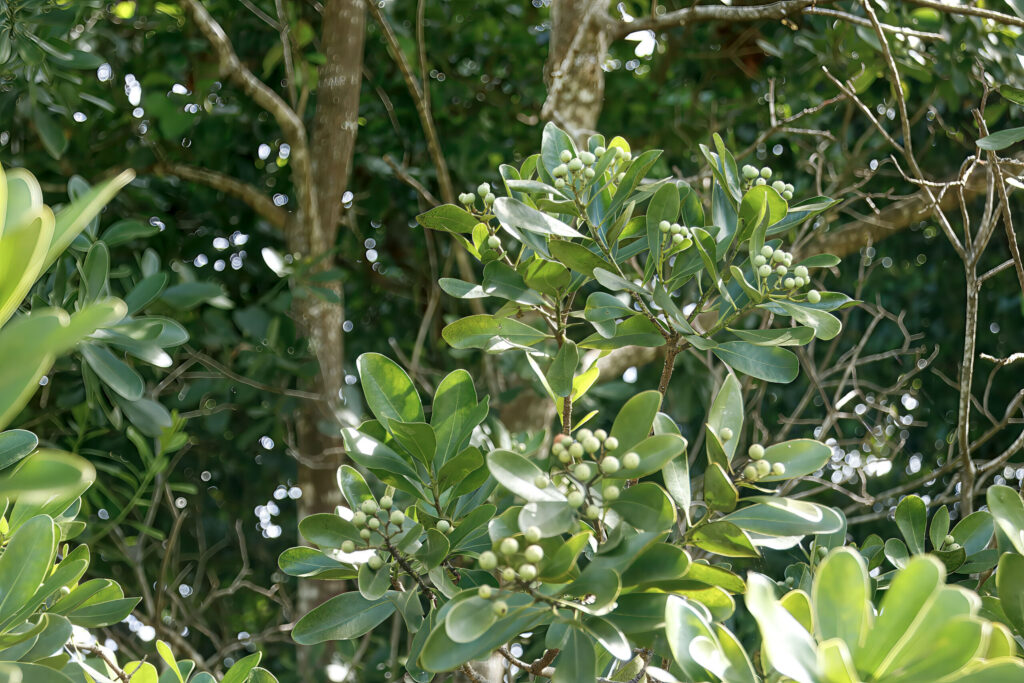
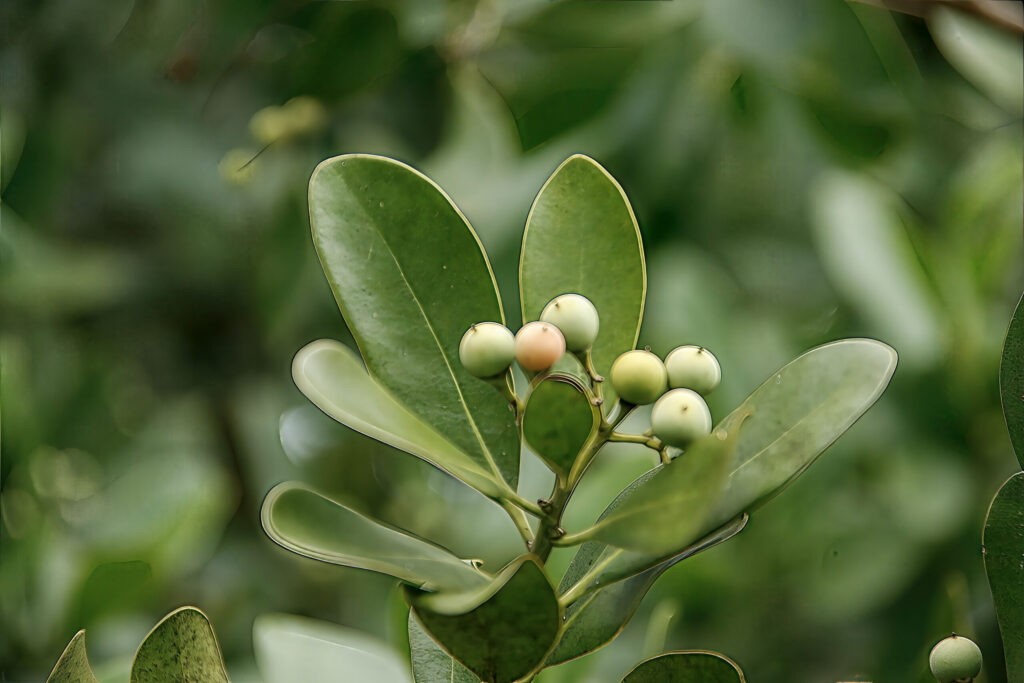
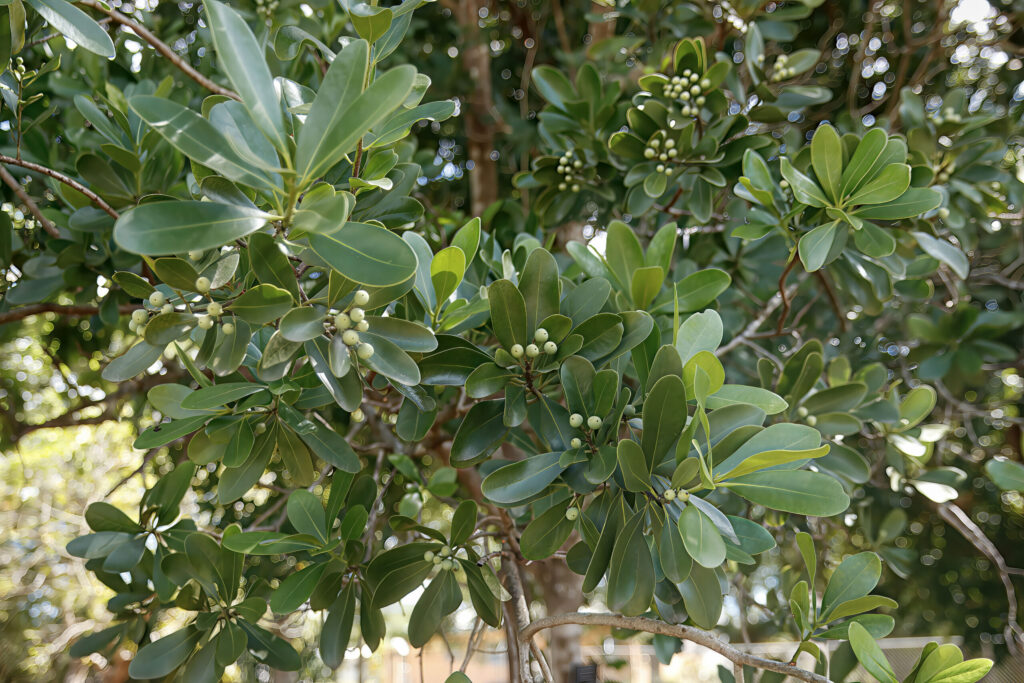
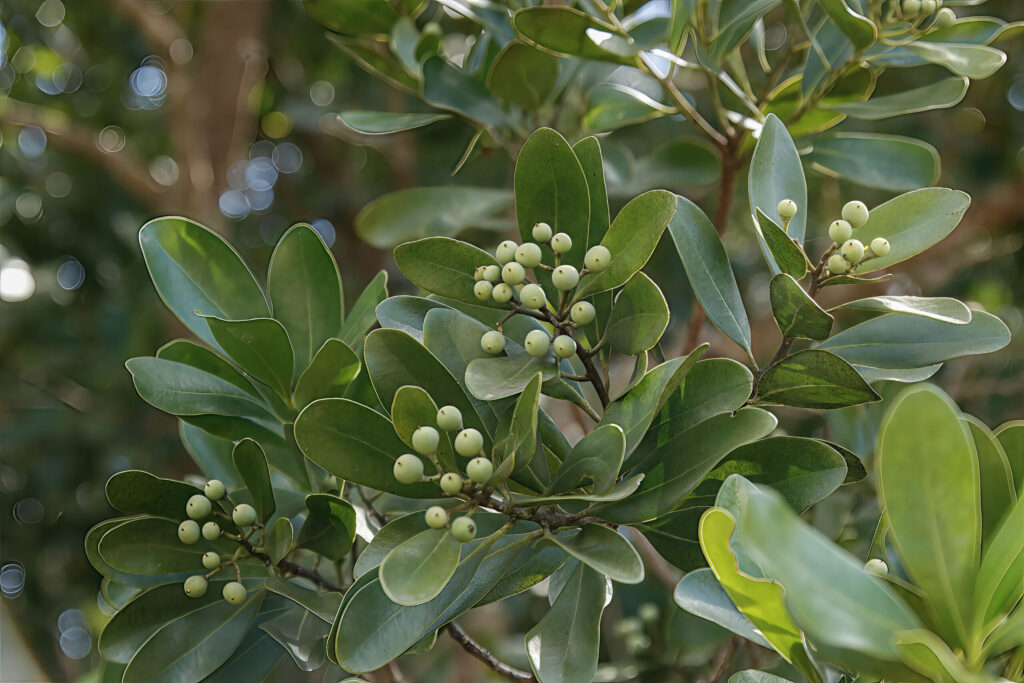
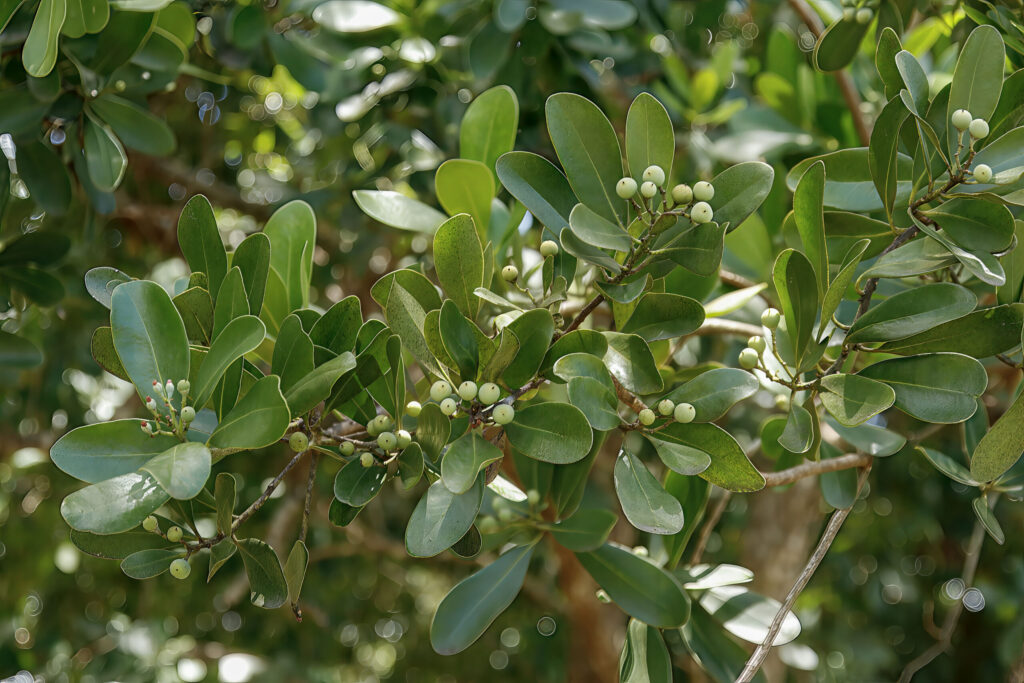
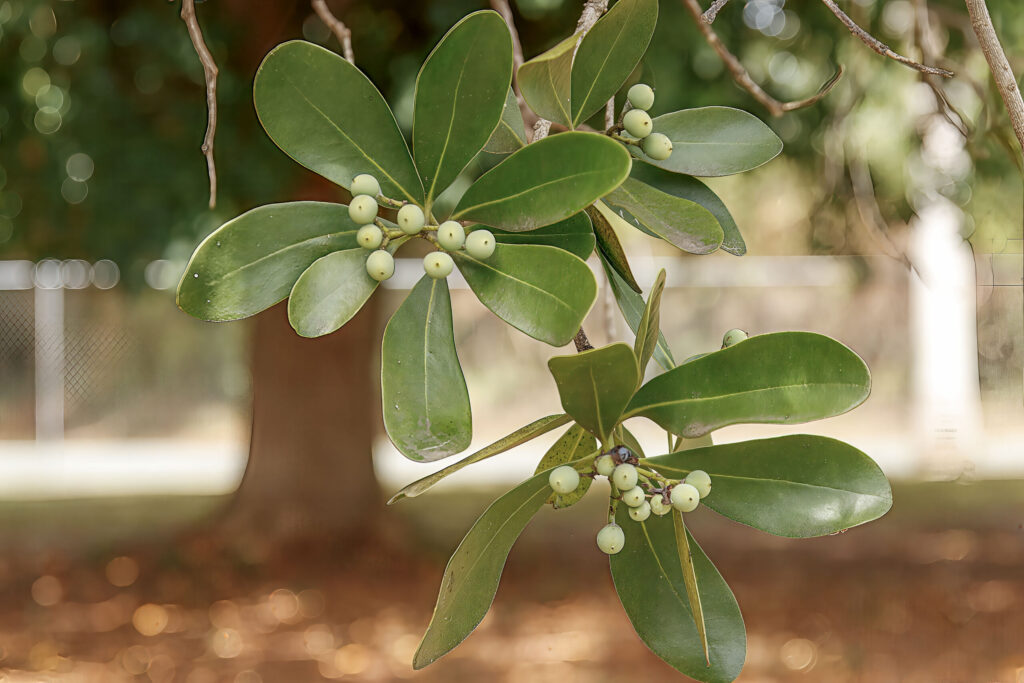
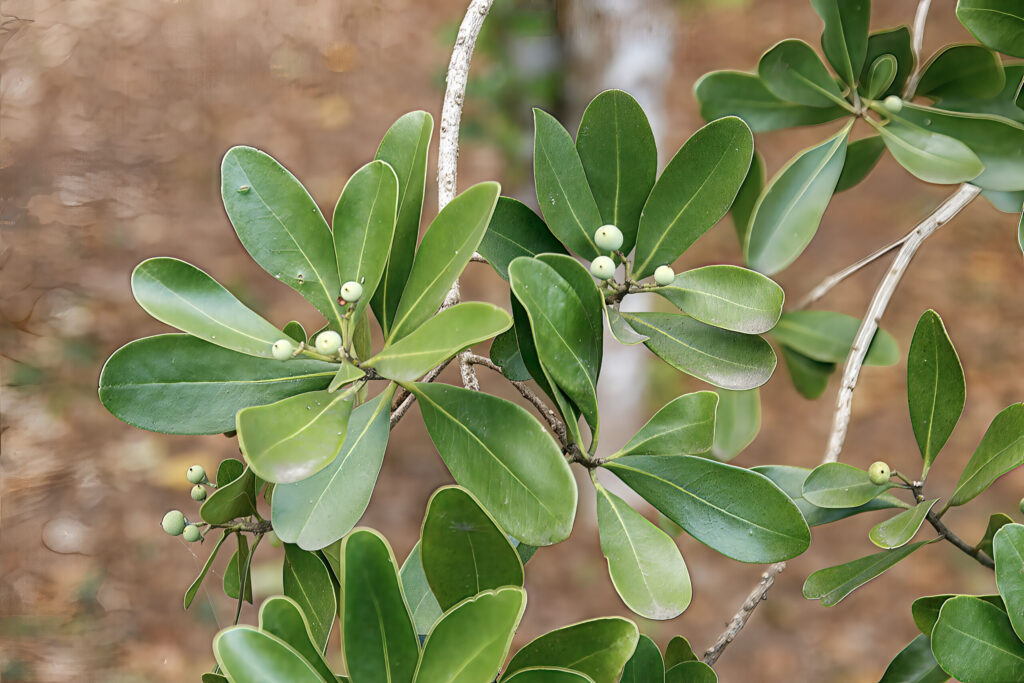
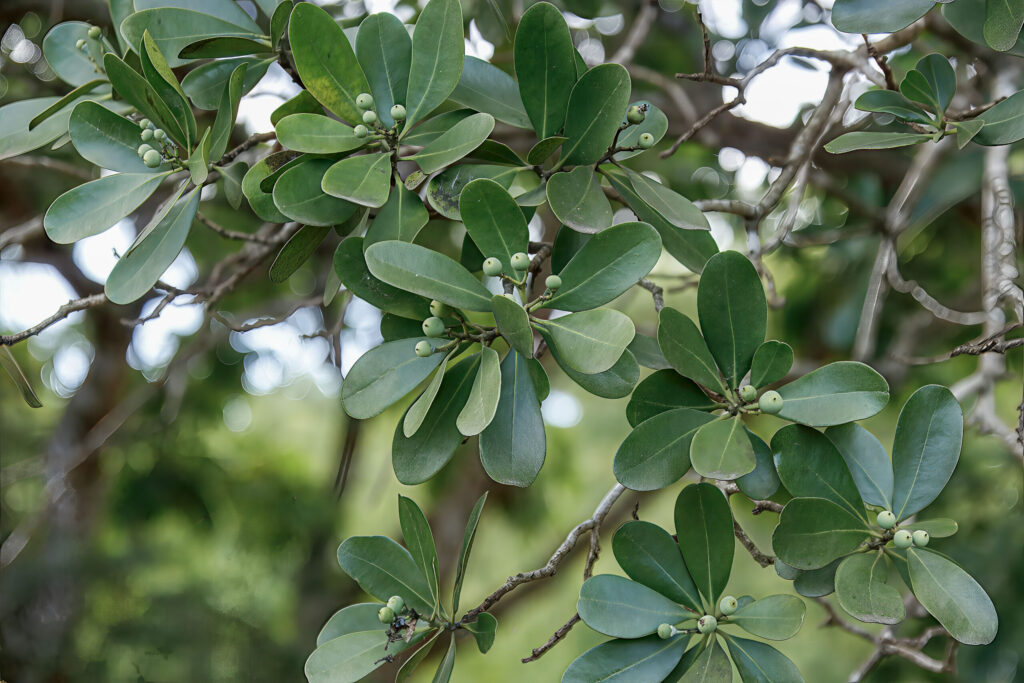
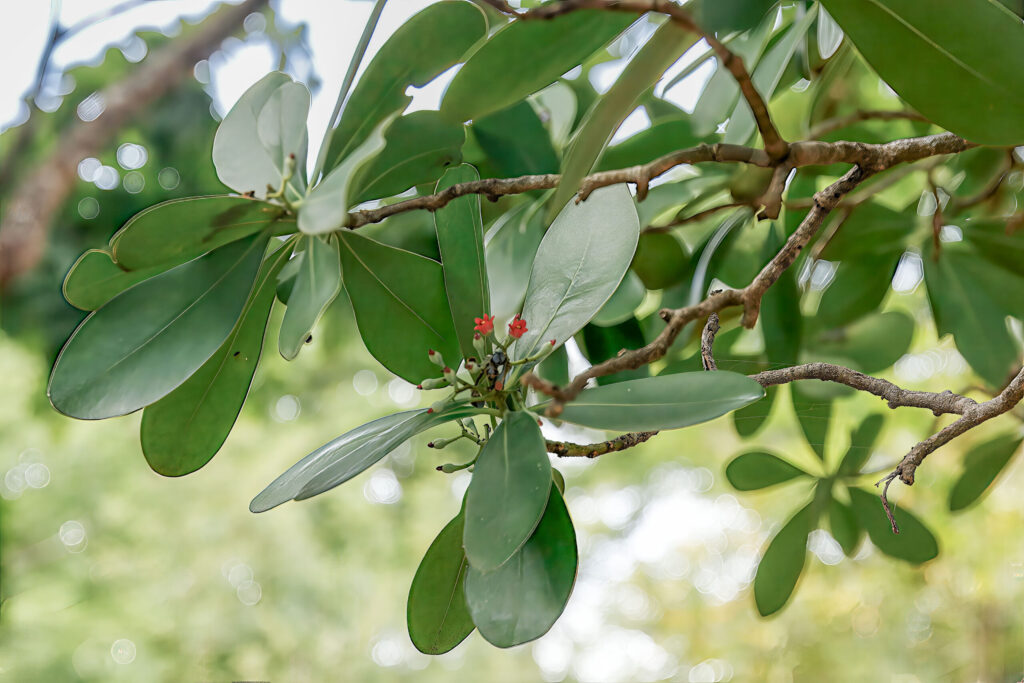
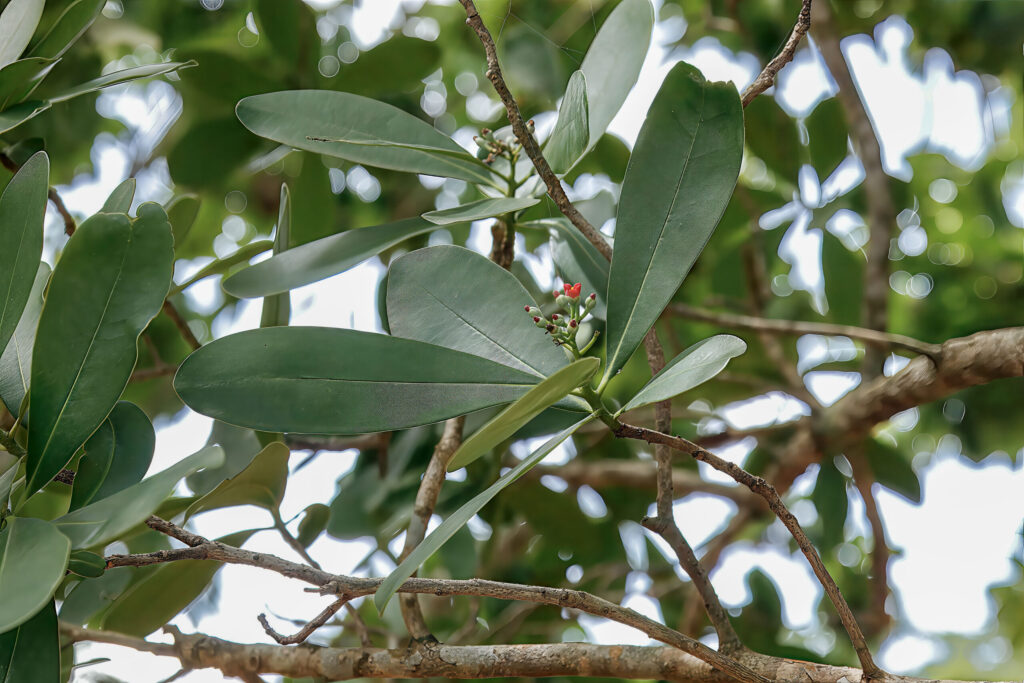
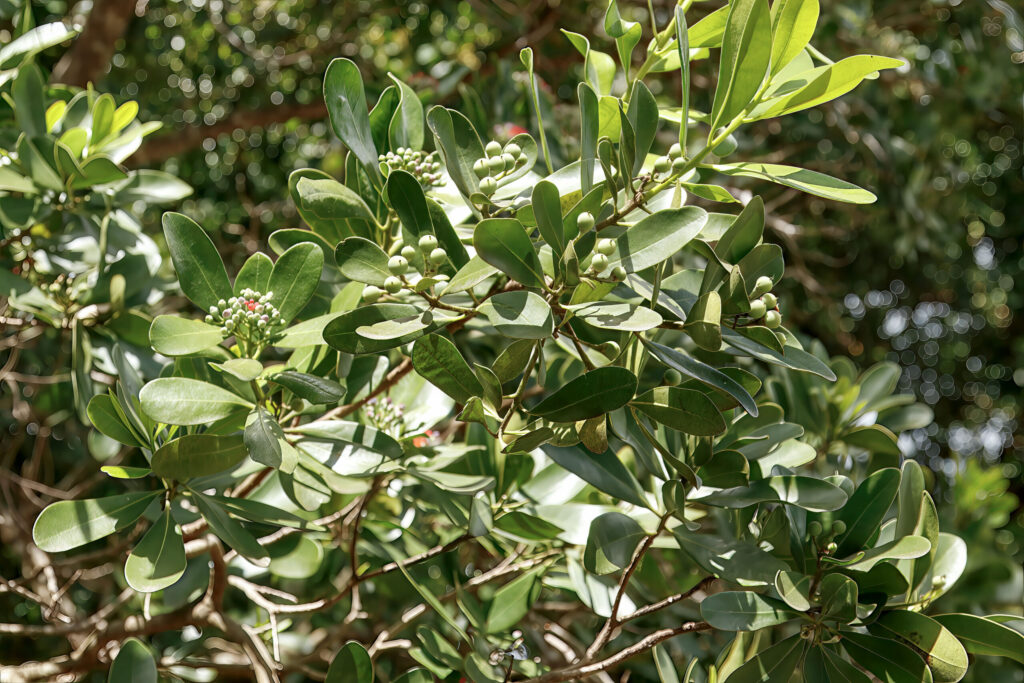
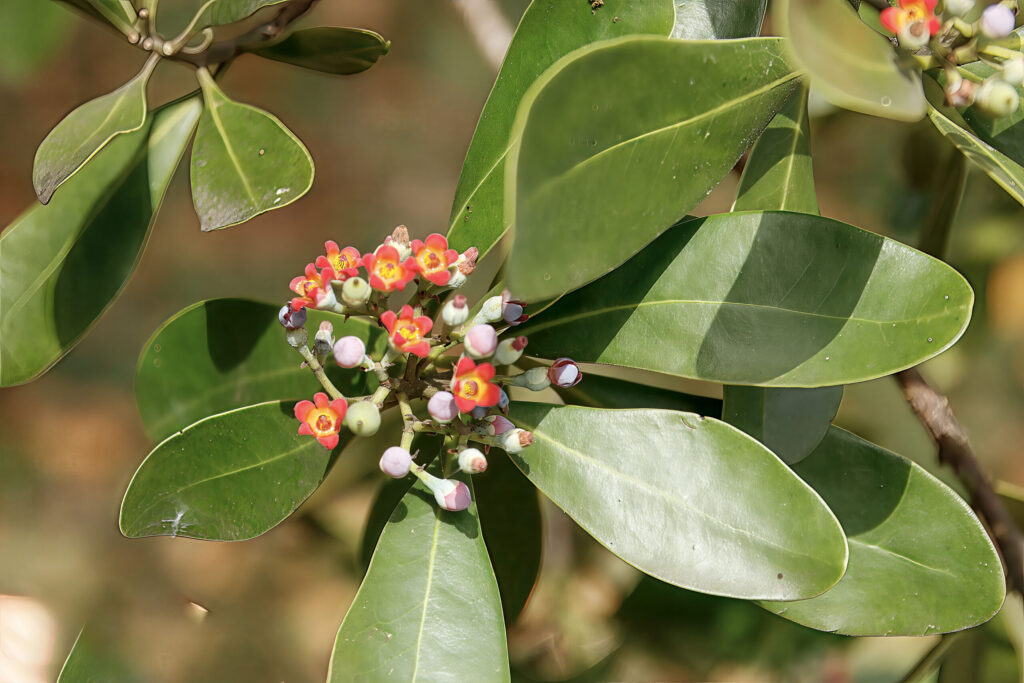






















Observations:
Phenological Markers – Wild Cinnamon Tree (Canella winterana)
1. Leaf Behavior
Wild Cinnamon is evergreen, maintaining its shiny, leathery, dark green leaves throughout the year.
- Leaves are simple, alternate, and oblong, with a noticeable pale midrib.
- Leaf turnover is gradual, with no strong seasonal leaf drop observed.
Observation Tips:
- Track new leaf emergence at branch tips, often with a bronze or reddish tinge.
- Monitor for leaf aging and shedding, which occurs individually and unobtrusively.
2. Flowering
Flowers are small, pink to purple, star-shaped, and strongly fragrant, often growing in tight axillary clusters.
- Flowering typically occurs in the spring to early summer (March–June), though light flowering can occur at other times.
- The flowers are attractive to bees and give the tree a soft ornamental quality.
Observation Tips:
- Look for dense flower clusters along branches, especially on mature wood.
- Track fragrance intensity, which increases in warm morning hours.
- Record pollinator visits, especially small bees and hoverflies.
3. Fruiting
Fruits are bright red berries, about the size of a pea, that stand out against the green foliage.
- Fruiting follows flowering, typically June–August, but ripe berries may persist into fall.
- Fruits are consumed by birds, aiding in natural seed dispersal.
Observation Tips:
- Monitor fruit development, from green to red.
- Record fruit drop and wildlife interaction, especially with frugivorous birds.
4. Growth Habit
A slow-growing, understory tree, Wild Cinnamon usually reaches 15–25 feet in height.
- Prefers moist, well-drained soils, often found in semi-shaded forest habitats.
- The bark is pungently aromatic, releasing a cinnamon-clove scent when scraped.
5. Seasonal Pattern (St. Croix)
- Jan–Feb: Steady canopy; minimal change
- Mar–Jun: Peak flowering
- Jun–Sep: Fruiting (bright red berries)
- Oct–Dec: Canopy maintenance and occasional flowering
